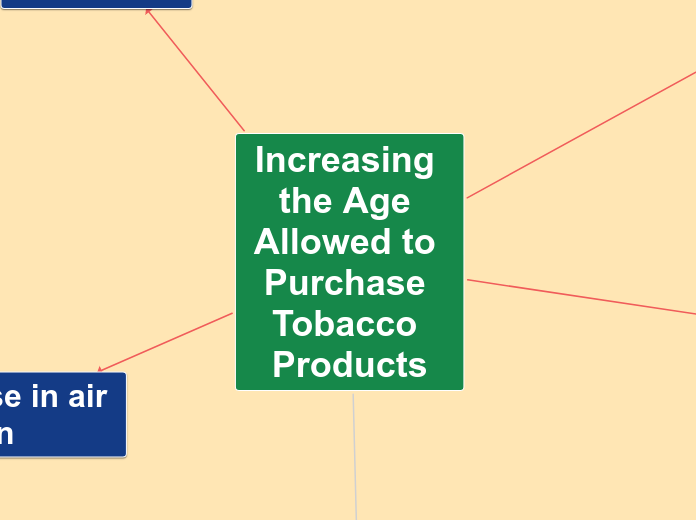Increasing the Age Allowed to Purchase Tobacco Products
Decrease in air pollution
Cigarette smoke is one of the largest pollutants in the air
Less people smoking would create less pollution. The environment as well as the people benefit
Lowers spending on health care for people and employers
Smoking related illness costs over $300 Billion each year to treat.
$170 billion was used for adult care, while $156 billion was lost productivity costs (workers taking time off of work to treat smoking related illness)
Decreases need for employee time off due to illness, disability
Non-smokers experience less health issues, and less need for medical intervention
Deters youth from smoking
90% of smokers had their first cigarette before 18
Ages 18-20 are the largest population to buy cigarettes for younger kids. Increasing the purchase age has been shown to decrease youth acess and use.
Helps prevent addiction in younger populations; more susceptable to this at a younger age (NCBI)
Healthier population overall
Tobacco use is the leading cause of preventable death in the US (NCBI)
Controlling tobacco consumption disrupts the cycle of young smokers that turn into lifelong smokers
Non-smokers experience less health issues, and less need for medical intervention
Less pollution also contributes to a healthier population; people experience less airway irritation caused by pollutant deposits in the airways.
